By Dan Weisz
I recently learned about a possible Western Screech Owl nesting in a saguaro way beyond the farming area of Pinal County. Last week I traveled to that site with a few friends, planning to arrive shortly before sunset. We drove through the farmland ranging west of Picacho Peak heading to the desert beyond all of the farms. Along the way, we came across a snake stretched across the rural road. Upon parking and exiting our car, we found a large Mojave Rattlesnake that welcomed us by striking a strong defensive pose.
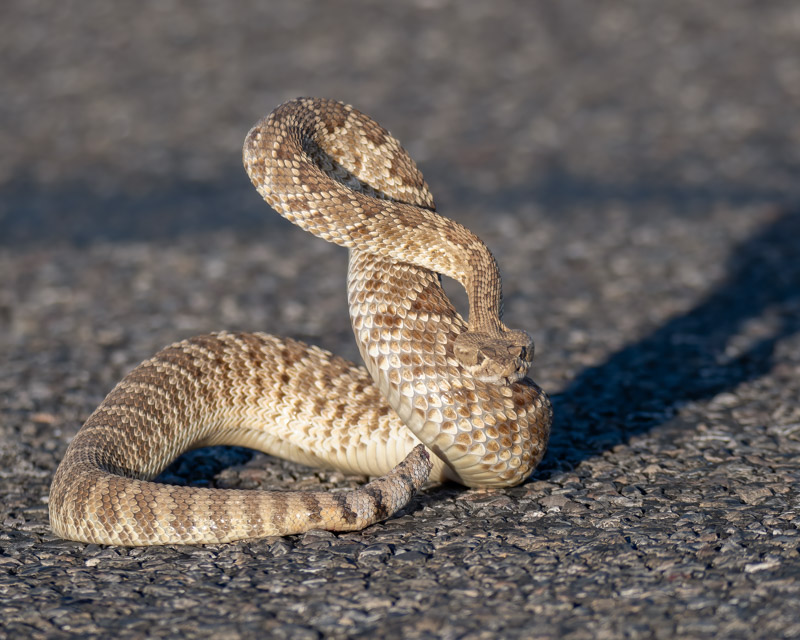
Our goals were to first, take photos and then, second, to move the snake off the road to safety. Mojave Rattlesnakes resemble Diamondbacks with a diamond patterning on their backs. The black and white banded tail on Mojaves usually feature wider white bands than black ones. While tasting the air, the shadow of the snake’s tongue lets us know how low the sun was in the sky.
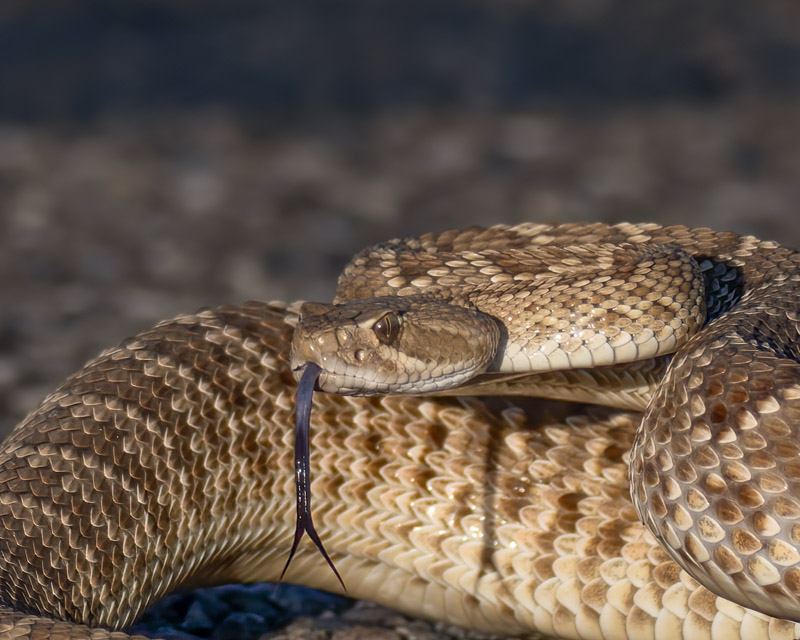
Sadly, looking at the snake’s tail lets us know why this individual was laying across the road. You can see that the rattle is missing, there is an open wound at the end of the tail and there is another bump at the start of the white tail banding which indicates this snake was run over by a car. Far too often, drivers will either not try to avoid the snake in the road or will deliberately try to hit the snake. It is awful to treat a living creature that way. And one less snake in the world means that many more rodents and rats around. We coaxed the snake into moving off the road, wished it well, and then went on our way.
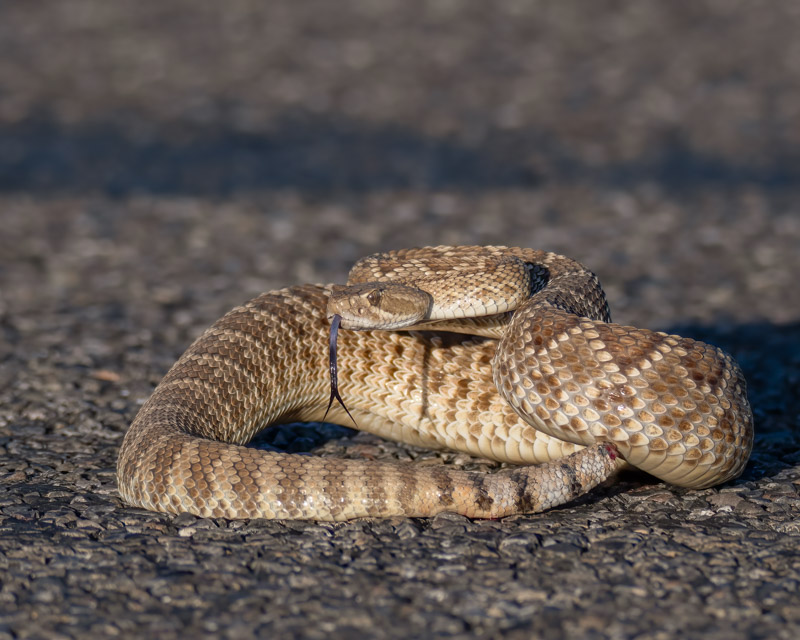
We arrived at our destination about 15 miles west of Picacho Peak, on a desolate dirt road beyond the pavement of the farmland. We found the saguaro (the only one within sight at that spot) and waited while the sun set in the distance.
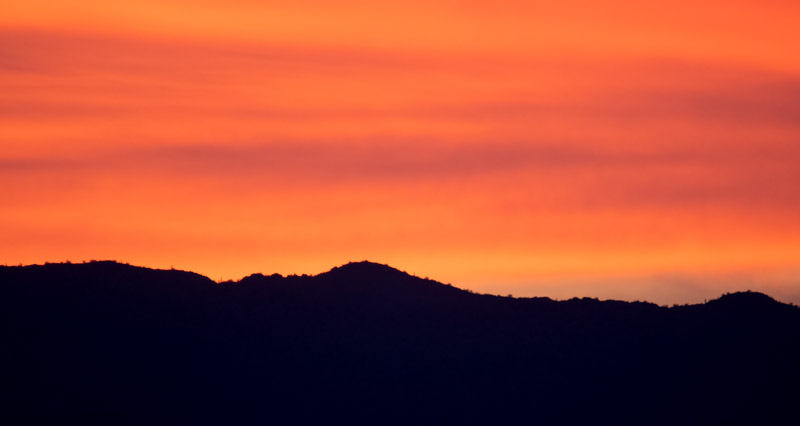
There were no city lights and no human habitations between us and the horizon. Western Screech Owls, like most owls, are creatures of the night. They emerge from their cavity roost spots once it gets dark so we waited and we waited.
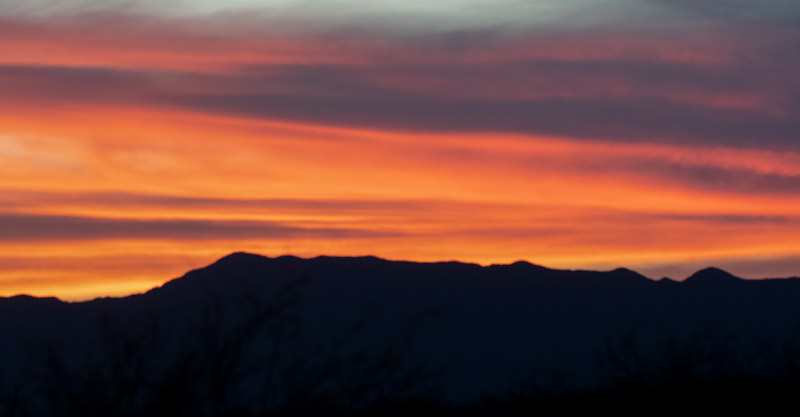
Once the sun settled and it grew dark at the lone saguaro in the area, we were rewarded for waiting. The male Western Screech Owl stuck his head out of one of the many openings in the saguaro. Eventually he opened his eyes, but he remained still for perhaps 20 minutes or so. It was dark out but through camera technology, support from supplemental lighting, and processing programs I was able to take this photo.
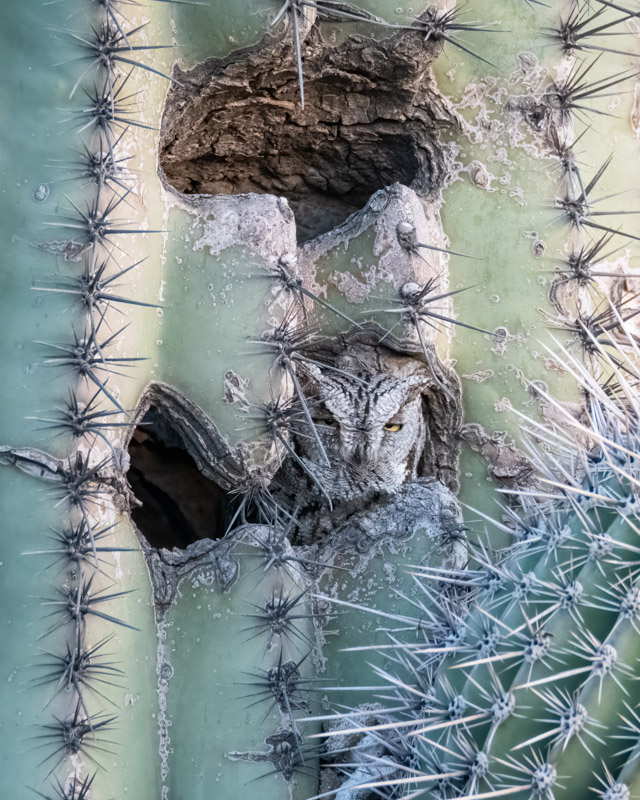
A view of the Western Screech Owl from another angle shows how protected his home is by the many long saguaro spines. It was dark when the owl suddenly flew off without any warning or signs to indicate that it was time for him to begin hunting.
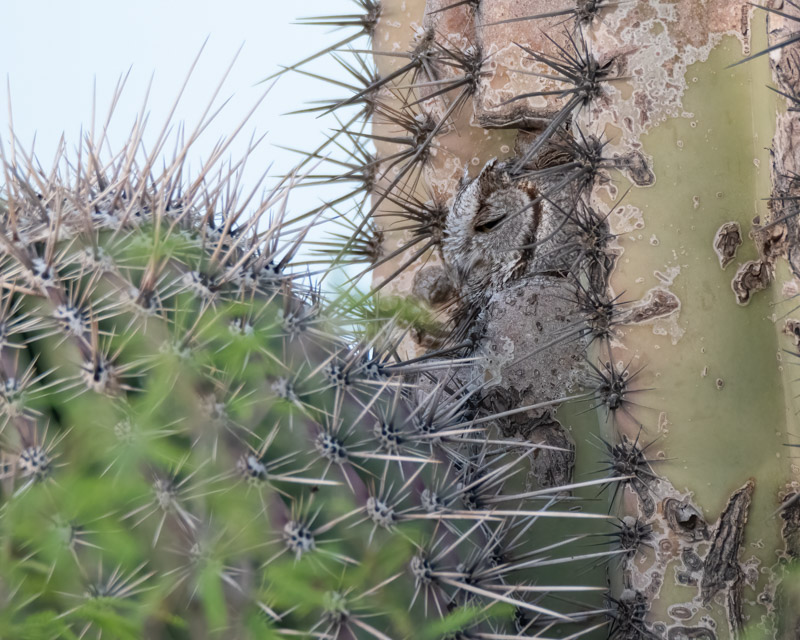
Just before the male Western Screech Owl flew off, the female appeared in a different cavity on the other side of the saguaro. She waited briefly before dropping back down inside the nest cavity. It was her time to wait for her partner to return with food for her and for the owlets that are likely sharing the nest cavity.
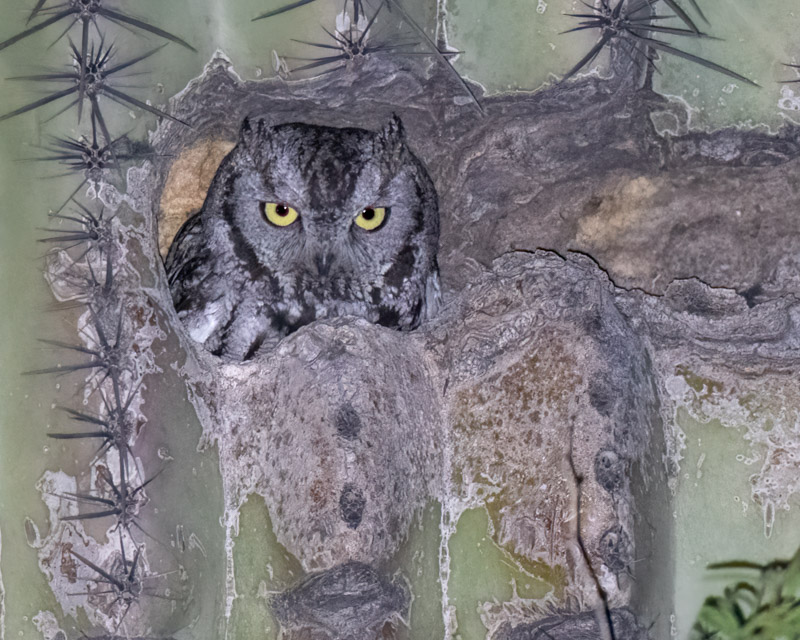
As soon as the female Western Screech Owl dropped back into the nest cavity, our adventure was over. We left the area satisfied having reached our goal, and the owls had the entire desert and the rest of the night to themselves.
